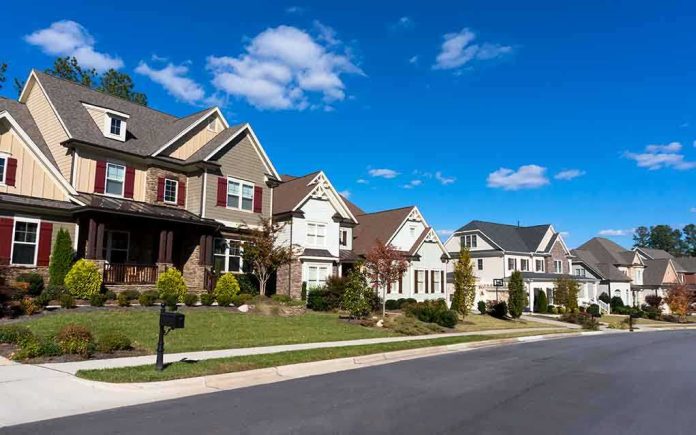
Spotting the five sneaky signs your neighborhood is changing—maybe not for the better—could save you from waking up in a place you barely recognize, or worse, regretting your biggest investment.
At a Glance
- Gentrification and neighborhood change follow visible, predictable patterns.
- Long-term residents, homebuyers, and developers have clashing interests in these transformations.
- Key indicators—like empty lots filling up and zoning changes—can signal big changes ahead.
- Short-term gains often mask the long-term risks of displacement and lost community identity.
Five Alarming Signs Your Neighborhood Is About to Flip
Let’s set the scene: You move into a cozy, familiar neighborhood. The coffee shop knows your order; the corner store still stocks your favorite cereal from 1992. Suddenly, construction crews start eyeing those vacant lots like kids in a candy store. This isn’t just a random flurry of hard hats—this is the first domino in a chain reaction known as gentrification, a term coined by sociologist Ruth Glass back in 1964. It describes the not-so-subtle process of neighborhoods transforming as middle-class folks move in and longtime residents find themselves priced out of their own homes.
So, what are the five dead giveaways that your block is on the brink of a seismic shift? First up: empty lots start vanishing. When those weedy, forgotten parcels suddenly sprout foundations and utility crews, it’s not just progress—it’s a harbinger. City records and council meeting minutes can reveal who’s behind the curtain, plotting new developments or pushing zoning changes. Keep an eye out for infrastructure upgrades too—new roads or transit stops are rarely just for your convenience; they’re breadcrumbs for higher property values and new residents on the horizon.
Who’s Pulling the Strings—and Who Gets Caught in the Crossfire?
Behind every neighborhood metamorphosis lurks a cast worthy of a soap opera: the hopeful homebuyer, the quietly anxious long-term resident, profit-hungry developers, city hall powerbrokers, and grassroots community groups. Homebuyers chase future value and a sense of place, but they’re playing a game where developers and local governments often set the rules. Developers swoop in with dreams of maximizing returns, while city councils and planning commissions rubber-stamp changes that can upend a block’s DNA in a single vote.
Long-term residents? They’re the soul of the neighborhood—and the ones with the most to lose. When property taxes and rents creep up, nostalgia offers little shelter. Community organizations may rally, but their influence is often dwarfed by the sheer force of investment dollars and city policy. The result? A delicate tug-of-war where the loudest (or richest) voices usually win, and the rest hope their street survives the showdown.
How the Dominoes Fall: The Classic Neighborhood Change Timeline
Neighborhood change isn’t a roulette spin; it’s a slow-motion domino effect. It starts with disinvestment—think boarded-up storefronts and crumbling sidewalks. Then a curious investor or city planner spots potential, and, like clockwork, the first signs of revival appear: construction, fresh paint, maybe a new bike lane. Next comes the gold rush—new residents, new businesses, and spiking home values. For some, it’s a jackpot. For others, especially lower-income families and beloved local shops, it’s the beginning of the end.
Short-term, the buzz is all cranes and rising home values. Long-term, the story can turn sour: displacement, cultural erasure, and the gut-punch of seeing a favorite diner replaced by an artisanal toast bar. Local businesses catering to the old guard may vanish, replaced by boutique gyms and gourmet pet bakeries. Meanwhile, the city celebrates higher tax revenues, but debates over affordable housing and preservation grow louder—and more desperate.
What the Experts Say: Hope, Hype, and Hard Truths
Urban planners and housing experts caution that not all development is evil. Balanced growth—if it includes affordable housing and safeguards for vulnerable residents—can boost neighborhoods without bulldozing their spirit. Real estate analysts point to those telltale empty lots and infrastructure projects as early warning signs that savvy homebuyers should heed. Academics remind us that the roots of gentrification run deep, fed by decades of neglect and policy decisions that favored some at the expense of others.
Ultimately, the debate rages on: some see neighborhood change as a renaissance, others as a slow-motion eviction notice. If you’re house hunting, do your homework—city plans, zoning laws, and public records are your crystal ball. If you already live there, get involved, stay informed, and don’t let developers write the next chapter without your voice in the mix. The only thing more certain than change is that it rarely asks permission.
Sources:
studiocarney.com: Gentrification
Urban Displacement Project: What Are Gentrification and Displacement?
University of Texas: Understanding Gentrification and Displacement



